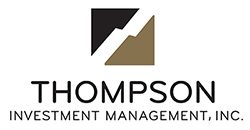
Terminology
Annuity: A series of payments made in regular intervals over a specified amount of time. Annuities can either be fixed (a defined amount every payment) or variable (varies based on market conditions).
Basis Points: A unit that is equal to 1/100th of 1%, and is used to denote the change in a financial instrument. The basis point is commonly used for calculating changes in interest rates, equity indexes and the yield of a fixed-income security.
Beta: A measure of the volatility, or systematic risk, of a security or a portfolio in comparison to the market as a whole.
Book Value: The net asset value of a company, calculated by total assets minus intangible assets (patents, goodwill) and liabilities.
Cash Balance Plan: A defined benefit plan that defines the benefit in terms that are more characteristic of a defined contribution plan. A cash balance plan defines the promised benefit in terms of a stated account balance.
Cash Flow: A measure of the cash generating capability of a company by adding non-cash charges (e.g. depreciation) and interest expense to pretax income.
Catch-up Contribution: Additional retirement saving contributions that allow people over the age of 50 to make in their 401(k) plan and/or Individual Retirement Account (IRA). For 2013, 401(k) participants over the age of 50 may save an additional $5,500. IRA participants over the age of 50 may save an additional $1,000.
Coupon Yield: The interest rate on a bond, determined upon issuance, and expressed as a percentage of par value.
Credit Ratings: Ratings are provided by Standard & Poor’s, who assign a rating based on their analysis of the issuer’s credit worthiness. The highest rating given is AAA and the lowest is C.
Defined Benefit Plan: A plan that promises a specified monthly benefit at retirement.
Dow Jones Industrial Average℠: The Dow Jones Industrial Average℠, also referred to as The Dow®, is a price-weighted measure of 30 U.S. blue-chip companies. The Dow® covers all industries with the exception of transportation and utilities.
Duration: A commonly used measure of the potential volatility of the price of a debt security, or the aggregate market value of a portfolio of debt securities, prior to maturity. Securities with a longer duration generally have more volatile prices than securities of comparable quality with a shorter duration.
Earnings Growth: A measure of growth in a company’s net income over a specific period of time, usually one to five years.
Forward P/E: Price/earnings ratio, using earnings estimates for the next four quarters.
Free Cash Flow: Measure of financial performance calculated as operating cash flow minus capital expenditures. Free cash flow (FCF) represents the cash that a company is able to generate after laying out the money required to maintain or expand its asset base.
NASDAQ: A computerized system that facilities trading and provides price quotations on more than 5,000 of the more actively traded over the counter stocks. Created in 1971, the NASDAQ was the world’s first electronic stock market.
NYSE: The New York Stock Exchange is the world’s largest stock exchange. The exchange is a platform through which securities listed thereon can be traded by brokerage firms.
Par Value: The face value of a bond.
Price to Book Ratio: The Price to Book (P/B) Ratio is calculated by dividing the current price of the stock by the company’s book value per share.
P/E Ratio: A valuation of a company’s current share price compared to its per-share earnings. Divide market value of a share by the earnings per share.
Plan Fiduciary: Anyone who exercises discretionary authority or discretionary control over management or administration of the plan, exercises any authority or control over management or disposition of plan assets or gives investment advice advice for a fee or other compensation with respect to assets of the plan.
Price/Sales Ratio: A ratio for valuing a stock relative to its own past performance, other companies or the market itself. Price to sales is calculated by dividing a stock’s current price by its revenue per share for the trailing 12 months.
Return on Capital (ROC): In economics, return on capital, also know as return on invested capital, is a financial measure that quantifies how well a company generates cash flow relative to the capital it has invested in its business.
Return on Equity (ROE): A measure of corporation’s profitability that reveals how much profit a company generates with the money shareholders have invested.
S&P 500: The S&P 500 Index is an unmanaged index commonly used to measure the performance of the U.S. stocks. You cannot directly invest in an index.
Top Heavy: A plan is Top Heavy if the aggregate of all the Accounts of all Key Employees exceeds 60% of the aggregate of all Accounts of all Participants.
Yield: The income earned from a bond, which takes into account the sum of the interest payment, the redemption value at the bond’s maturity, and the initial purchase price of the bond.



